
|
María Alejandra Trujillo,
Breaking News Network,
2024.

The crux of the gene drive hinges on the process of sex determination in medflies. The drive effectively converts genetic females into fertile XX males, which, unlike their female counterparts, are harmless to crops. This innovative approach presents a possibility for a more ...
Keywords: animals, complex, dynamics, Ecology, Environmental Sciences &, Eradication, Evolutionary Biology, fitness, frequency, Gene drive, gene drive genetics, gene drive models, gene drive synthetic, house mouse, invasive species, Life Sciences & Biomedicine - Other Topics, mice, mouse t-haplotypes, pest control, polyandry, populations, relative, sperm competition, tailless, technologies, wild house mice
|

|
Alex Binkley,
National Newswatch,
2024.

Ottawa-Canada needs to boost its gene editing research capacity to better advance that branch of science’s pest control potential, says a report by the Council of Canadian Academies. There is insufficient intensive research and development activity in gene-edited pest control ...
Keywords: animals, complex, dynamics, Ecology, Environmental Sciences &, Eradication, Evolutionary Biology, fitness, frequency, Gene drive, gene drive genetics, gene drive models, gene drive synthetic, house mouse, invasive species, Life Sciences & Biomedicine - Other Topics, mice, mouse t-haplotypes, pest control, polyandry, populations, relative, sperm competition, tailless, technologies, wild house mice
|

|
Clark, A. C., Edison, R., Esvelt, K., Kamau, S., Dutoit, L., Champer, J., Champer, S. E., Messer, P. W., Alexander, A., & Gemmell, N. J.,
Molecular Ecology Resources,
00:1–14.
2023.

Fertility-targeted gene drives have been proposed as an ethical genetic approach for managing wild populations of vertebrate pests for public health and conservation benefit. This manuscript introduces a framework to identify and evaluate target gene suitability based on ...
Keywords: animals, complex, dynamics, Ecology, Environmental Sciences &, Eradication, Evolutionary Biology, fitness, frequency, Gene drive, gene drive genetics, gene drive models, gene drive synthetic, house mouse, invasive species, Life Sciences & Biomedicine - Other Topics, mice, mouse t-haplotypes, pest control, polyandry, populations, relative, sperm competition, tailless, technologies, wild house mice
|

|
Sandeep Kunchikor,
Express Healthcare Management,
2023.

Scientists in Canada are urging serious discussions on the use of genetic modification as a new technique in pest control. In a recent report by the Pest Management Regulatory Agency, a branch of Health Canada that regulates pesticide use, experts argue that genetic modification ...
Keywords: animals, complex, dynamics, Ecology, Environmental Sciences &, Eradication, Evolutionary Biology, fitness, frequency, Gene drive, gene drive genetics, gene drive models, gene drive synthetic, house mouse, invasive species, Life Sciences & Biomedicine - Other Topics, mice, mouse t-haplotypes, pest control, polyandry, populations, relative, sperm competition, tailless, technologies, wild house mice
|

|
CCA (Council of Canadian Academies),
Framing Challenges and Opportunities for Canada,
2023.

Gene-editing technologies are changing approaches to pest management. Rapidly evolving but unproven gene-editing tools could potentially mitigate the impacts of pests in public health, conservation, and agricultural contexts. The use of these tools, however, is accompanied by ...
Keywords: animals, complex, dynamics, Ecology, Environmental Sciences &, Eradication, Evolutionary Biology, fitness, frequency, Gene drive, gene drive genetics, gene drive models, gene drive synthetic, house mouse, invasive species, Life Sciences & Biomedicine - Other Topics, mice, mouse t-haplotypes, pest control, polyandry, populations, relative, sperm competition, tailless, technologies, wild house mice
|

|
S. Thompson,
naija247news,
2020.

Dr Rose Gidado, County Coordinator, Open Forum on Agricultural Biotechnology(OFAB), has advised farmers to adopt the gene drive-based pest control technology.
Gidado, also Deputy Director, National Biotechnology Development Agency (NABDA), said the adoption would significantly ...
Keywords: animals, complex, dynamics, Ecology, Environmental Sciences &, Eradication, Evolutionary Biology, fitness, frequency, Gene drive, gene drive genetics, gene drive models, gene drive synthetic, house mouse, invasive species, Life Sciences & Biomedicine - Other Topics, mice, mouse t-haplotypes, pest control, polyandry, populations, relative, sperm competition, tailless, technologies, wild house mice
|

|
M. S. Aronna and Y. Dumont,
Bulletin of Mathematical Biology,
82:29.
2020.

We consider a minimalist model for the Sterile Insect Technique (SIT), assuming that residual fertility can occur in the sterile male population.
Keywords: animals, complex, dynamics, Ecology, Environmental Sciences &, Eradication, Evolutionary Biology, fitness, frequency, Gene drive, gene drive genetics, gene drive models, gene drive synthetic, house mouse, invasive species, Life Sciences & Biomedicine - Other Topics, mice, mouse t-haplotypes, pest control, polyandry, populations, relative, sperm competition, tailless, technologies, wild house mice
|

|
H. Dahmana and O. Mediannikov,
Pathogens,
9:26.
2020.

Deadly pathogens and parasites are transmitted by vectors and the mosquito is considered the most threatening vector in public health, transmitting these pathogens to humans and animals. We are currently witnessing the emergence/resurgence in new regions/populations of the most ...
Keywords: animals, complex, dynamics, Ecology, Environmental Sciences &, Eradication, Evolutionary Biology, fitness, frequency, Gene drive, gene drive genetics, gene drive models, gene drive synthetic, house mouse, invasive species, Life Sciences & Biomedicine - Other Topics, mice, mouse t-haplotypes, pest control, polyandry, populations, relative, sperm competition, tailless, technologies, wild house mice
|

|
A. Isah and R. S. M. Gidado,
OFAB Nigeria,
2020.

Several studies have shown that the Cas9-mediated gene drive technology is cheaper and will be easily affordable by the efficient Nigerian scientists to explore. The application of the gene drive technologies have many more controls over several other devastating insects in ...
Keywords: animals, complex, dynamics, Ecology, Environmental Sciences &, Eradication, Evolutionary Biology, fitness, frequency, Gene drive, gene drive genetics, gene drive models, gene drive synthetic, house mouse, invasive species, Life Sciences & Biomedicine - Other Topics, mice, mouse t-haplotypes, pest control, polyandry, populations, relative, sperm competition, tailless, technologies, wild house mice
|
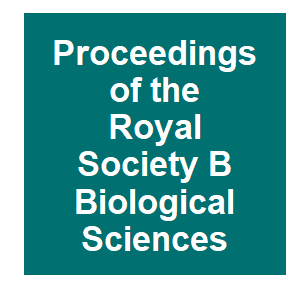
|
Manser, AC, S. J.; Sutter, A.; Blondel, D. V.; Serr, M.; Godwin, J.; Price, T. A. R.,
Proceedings of the Royal Society B-Biological Sciences,
286:9.
2019.

House mice are a major ecosystem pest, particularly threatening island ecosystems as a non-native invasive species. Rapid advances in synthetic biology offer new avenues to control pest species for biodiversity conservation. Recently, a synthetic sperm-killing gene drive ...
Keywords: animals, complex, dynamics, Ecology, Environmental Sciences &, Eradication, Evolutionary Biology, fitness, frequency, Gene drive, gene drive genetics, gene drive models, gene drive synthetic, house mouse, invasive species, Life Sciences & Biomedicine - Other Topics, mice, mouse t-haplotypes, pest control, polyandry, populations, relative, sperm competition, tailless, technologies, wild house mice
|
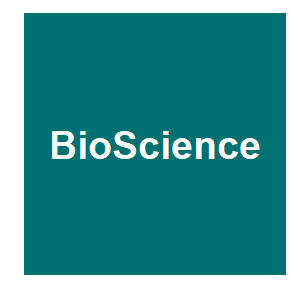
|
B. A. Robertson, R. S. Ostfeld and F. Keesing,
Bioscience,
67:982-993.
2017.

Here, we bring together science from the pest-control, eco-evolutionary, and conservation communities to outline how evolutionary traps can be repurposed to eliminate or control pest species. We highlight case studies and devise strategies for the selection of appropriate cues to ...
Keywords: animals, complex, dynamics, Ecology, Environmental Sciences &, Eradication, Evolutionary Biology, fitness, frequency, Gene drive, gene drive genetics, gene drive models, gene drive synthetic, house mouse, invasive species, Life Sciences & Biomedicine - Other Topics, mice, mouse t-haplotypes, pest control, polyandry, populations, relative, sperm competition, tailless, technologies, wild house mice
|
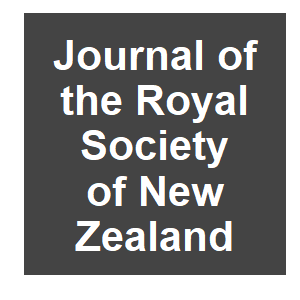
|
P. K. Dearden, N. J. Gemmell, O. R. Mercier, P. J. Lester, M. J. Scott, R. D. Newcomb, T. R. Buckley, J. M. E. Jacobs, S. G. Goldson and D. R. Penman,
Journal of the Royal Society of New Zealand,
48:225-244.
2017.

Here we describe the current state of gene drive technologies and present a series of examples to examine the potential benefits and problems arising from gene drive approaches for pest control in New Zealand.
Keywords: animals, complex, dynamics, Ecology, Environmental Sciences &, Eradication, Evolutionary Biology, fitness, frequency, Gene drive, gene drive genetics, gene drive models, gene drive synthetic, house mouse, invasive species, Life Sciences & Biomedicine - Other Topics, mice, mouse t-haplotypes, pest control, polyandry, populations, relative, sperm competition, tailless, technologies, wild house mice
|
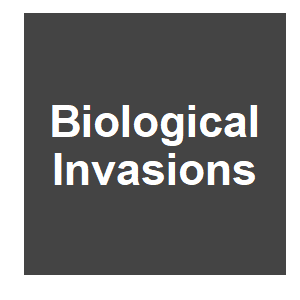
|
Harvey-Samuel, TA, T.; Alphey, L.,
Biological Invasions,
19:1683-1703.
2017.

Invasive species remain one of the greatest threats to global biodiversity. Their control would be enhanced through the development of more effective and sustainable pest management strategies. Recently, a novel form of genetic pest management (GPM) has been developed in which ...
Keywords: animals, complex, dynamics, Ecology, Environmental Sciences &, Eradication, Evolutionary Biology, fitness, frequency, Gene drive, gene drive genetics, gene drive models, gene drive synthetic, house mouse, invasive species, Life Sciences & Biomedicine - Other Topics, mice, mouse t-haplotypes, pest control, polyandry, populations, relative, sperm competition, tailless, technologies, wild house mice
|
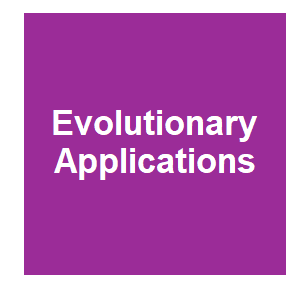
|
D. K. Dowling, D. M. Tompkins and N. J. Gemmell,
Evolutionary Applications,
8:8710880.
2015.

The Trojan Female Technique (TFT) was recently proposed as a prospective approach to biological pest control. However, applicability of the TFT relies on mitochondrial mutations whose male-sterilizing effects are general across nuclear genomic contexts. We test this assumption, ...
Keywords: animals, complex, dynamics, Ecology, Environmental Sciences &, Eradication, Evolutionary Biology, fitness, frequency, Gene drive, gene drive genetics, gene drive models, gene drive synthetic, house mouse, invasive species, Life Sciences & Biomedicine - Other Topics, mice, mouse t-haplotypes, pest control, polyandry, populations, relative, sperm competition, tailless, technologies, wild house mice
|

|
R. E. Thresher, M. Canning and N. J. Bax,
Ecological Applications,
23:801-814.
2013.

This study tests the sensitivity of genetically based pest control options based on sex ratio distortion to intra-and intersexual aggressive interactions that affect male and female survival and fitness. Data on these interactions and their impacts were gathered for the ...
Keywords: animals, complex, dynamics, Ecology, Environmental Sciences &, Eradication, Evolutionary Biology, fitness, frequency, Gene drive, gene drive genetics, gene drive models, gene drive synthetic, house mouse, invasive species, Life Sciences & Biomedicine - Other Topics, mice, mouse t-haplotypes, pest control, polyandry, populations, relative, sperm competition, tailless, technologies, wild house mice
|




